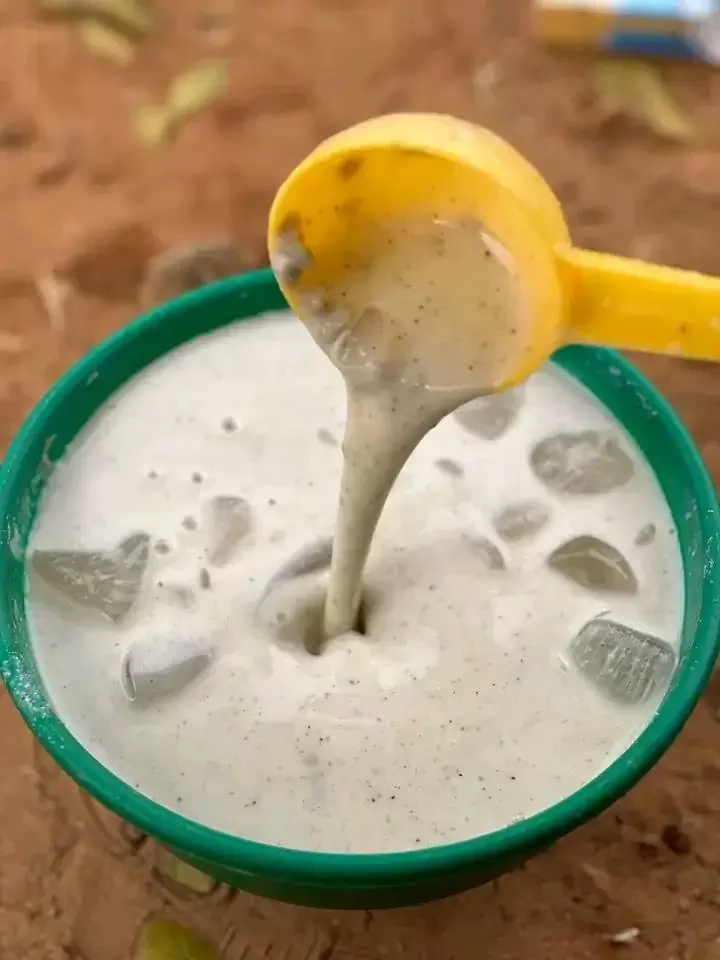Zobo, Fura da Nono & Kunun Tsamiya: Drinks That Define Hausa Culture
By: Chimdindu Ken-Anaukwu
If there’s one thing the Hausa people have mastered apart from trading and storytelling, it’s making drinks that can make your tongue dance and your spirit hum. Today, we’re exploring Zobo, Fura da Nono, and Kunun Tsamiya, three iconic beverages that define Hausa refreshment culture.
Introduction: More Than Just Drinks
In Hausa land, drinks are not just for quenching thirst, they are social bridges, health tonics, and symbols of hospitality. You can’t visit a Hausa home without being offered one of these drinks. Refusing is like telling your grandma her jollof isn’t sweet; don’t try it.
Zobo – The Hibiscus Powerhouse
Zobo is the Hausa version of a global superstar: the hibiscus drink. Made from dried hibiscus petals (called zoborodo), it’s refreshing, tangy, and proudly red. Think of it as nature’s soda but without all the guilt.
Ingredients:
Dried hibiscus petals
Ginger (lots of it, if you want to feel alive)
Pineapple peels or juice
Cloves (kanumfari)
Sugar or honey to taste
Preparation:
Wash the hibiscus petals thoroughly.
Boil them in water with sliced ginger, pineapple, and cloves.
After about 30 minutes, strain the mixture.
Sweeten to taste and chill.
Zobo is served everywhere from weddings to street stalls. Some even mix it with fruit juice or soda for extra flavor. A word of advice: if you spill it on your white clothes, say goodbye; it’s more permanent than heartbreak.
Fura da Nono – The Drink of Strength
Fura da Nono is the true breakfast of champions in northern Nigeria. It’s made from millet balls (fura) blended with fermented cow milk (nono). Thick, rich, and slightly sour, it’s a meal in a calabash.
Ingredients:
Millet flour
Nono (fermented milk)
A pinch of salt
Preparation:
Mix millet flour with water and form small balls.
Cook the balls in hot water until firm.
Mash them slightly, then mix with nono.
Add sugar (optional) and enjoy cold.
In Hausa culture, fura da nono is a symbol of nourishment and unity. You’ll see people sharing one calabash among friends; no one cares about germs when the drink tastes like heritage.
Kunun Tsamiya – The Sour-Sweet Comfort
Kunun Tsamiya is made from tamarind (tsamiya), and it’s the Hausa answer to lemonade, but earthier and deeper in flavor. It’s especially loved during Ramadan for its refreshing, thirst-quenching quality.
Ingredients:
Tamarind pulp
Ginger
Cloves
Sugar or honey
Water
Preparation:
Soak the tamarind pulp in warm water to extract the juice.
Blend with ginger and cloves.
Strain and sweeten.
Serve cold or warm, depending on the weather and your mood.
This drink is the perfect balance of sour, sweet, and spice, a trio that mirrors the Hausa people’s balanced lifestyle: hard work, hospitality, and humor.
How They’re Made (Quick Recap)
| Drink | Base Ingredient | Flavor Profile | Occasion |
|---|---|---|---|
| Zobo | Hibiscus | Tangy, fruity | Parties, street stalls |
| Fura da Nono | Millet & milk | Creamy, sour | Breakfast, gatherings |
| Kunun Tsamiya | Tamarind | Sour-sweet, spicy | Ramadan, hot days |
Cultural Importance
These drinks do more than refresh; they connect generations. Recipes are passed down from grandmothers to mothers to daughters, and no two versions taste exactly the same. They’re also symbols of hospitality, used to welcome guests, celebrate weddings, or mark special occasions.
In Hausa land, a host’s generosity is measured by the fullness of your cup, and trust me, it’s always full.
When and How to Serve Them
Zobo: Best served chilled, with ice cubes that clink like sweet music on a sunny day.
Fura da Nono: Serve in a calabash if you want to feel truly local; avoid spoons, just swirl and sip.
Kunun Tsamiya: Perfect for breaking fasts or cooling down after a hot day.
FAQs
Q1. Can I make Zobo without ginger?
Yes, but that’s like dancing without drums. It’s possible, but why?
Q2. Is Fura da Nono vegetarian-friendly?
If you replace nono with plant-based milk, yes, but traditionalists will call it “fura da what?”
Q3. How long can Kunun Tsamiya last?
About 2 days in the fridge. But good luck keeping it that long without finishing it.
Q4. Can I mix Zobo and Fura da Nono?
Please don’t. Your ancestors will not be pleased.
Q5. Why are these drinks so loved?
Because they’re not just drinks, they’re stories in a cup, connecting the past with the present in every sip.
These three drinks prove one thing: when it comes to flavor, culture, and community, the Hausa people don’t just quench thirst. They celebrate life with every gulp.






